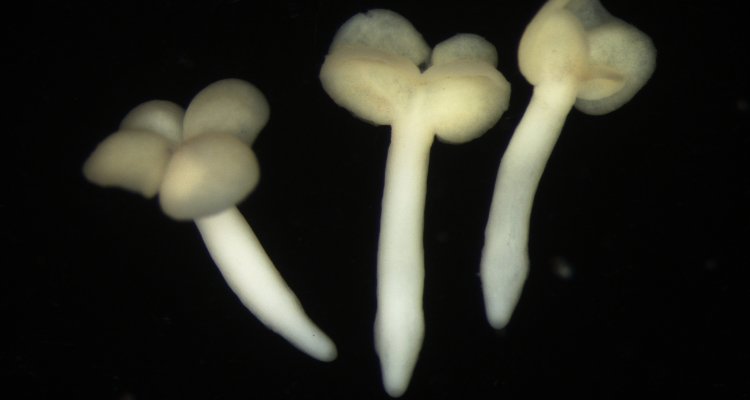
Project
The essence of fruitful microspore embryogenesis
This project explores how immature Brassica napus pollen grains (microspores) can be transformed into plant embryos through a process called microspore embryogenesis (ME). The main goal is to understand the molecular mechanisms that enable this transformation. By studying the gene expression and epigenetic changes throughout this process, I aim to gain fundamental knowledge about totipotency acquisition and embryo development.
Background
ME was discovered by accident in the 1960s and has been extensively studied since. This technique is valuable for understanding totipotency, the ability of a single cell to develop into all cell types of an organism. On top of that, it is particularly valuable in the breeding industry, as the haploid embryos that are produced can be converted into homozygous lines in one generation upon chromosome doubling.
ME is induced by an abiotic stress treatment. This treatment leads to the formation of different embryonic structures that either develop into different types of embryos or that undergo cell death. Several studies have identified changes in DNA, histone modifications and gene expression patterns that are associated with microspore embryo induction. These studies mainly relied on bulk analyses, which provide an average picture across all cells in a sample. However, this approach overlooks the developmental differences between the different types of embryonic structures.
Project description
To overcome this low-resolution bottleneck, I will use single-nucleus and low-input approaches to reconstruct the transcriptome and epigenome profiles of individuals cells as they transition from pollen to microspore embryo.
Given the complex nature of transcriptional reprogramming required for ME, trajectories of individual cells over time will be reconstructed. This will give insights into the developmental decision-making processes leading to the formation of diverse embryogenic structures. These trajectories will outline the paths from microspore to distinct cell clusters representing the different embryogenic structures.
Additionally, considering the significance of chromatin regulation during ME, I aim to investigate chromatin accessibility, DNA methylation, and histone modifications throughout ME.
Once this data is obtained, data analysis tools will be utilized to investigate gene regulatory networks underlying totipotency acquisition in microspores and subsequent embryonic development.
The expression patterns and loss- and gain-of-functions for selected gene candidates will be examined to determine the role of these genes in totipotency acquisition and microspore embryo development.
Contact
Do you have a question about microspore embryogenesis, or would you like to join us as a student researcher? Please contact us.